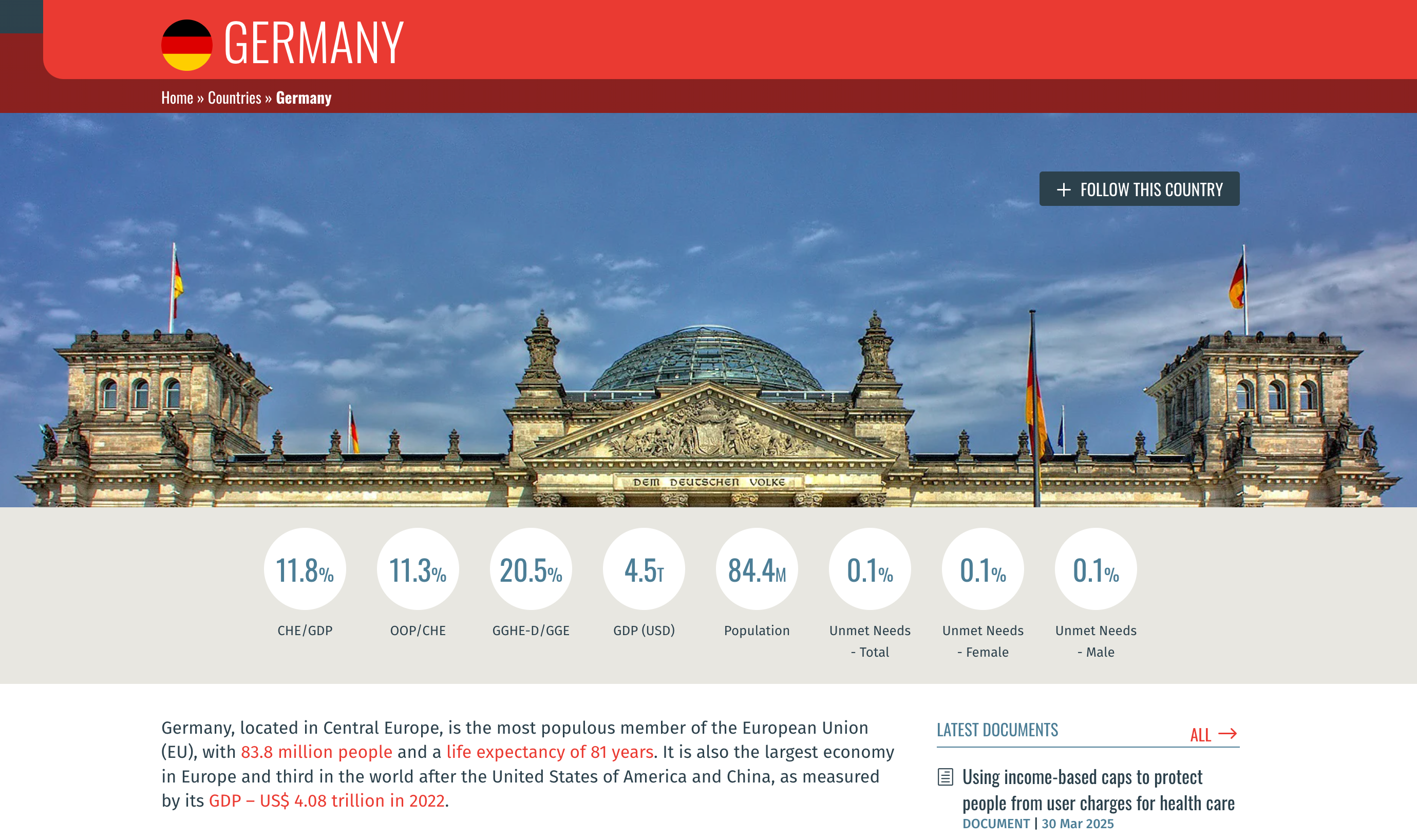Germany, located in Central Europe, is the most populous member of the European Union (EU), with 83.8 million people and a life expectancy of 81 years. It is also the largest economy in Europe and third in the world after the United States of America and China, as measured by its GDP – US$ 4.08 trillion in 2022.
The following extract from Germany: Country Health Profile 2023, published by the European Observatory on Health Systems and Policies and the Organisation of Economic Co-operation and Development, summarizes Germany’s health system.
Germany has a statutory health insurance (SHI) system, and it is mandatory for people to have health insurance. For certain occupational groups and high earners, it is possible to opt out of SHI coverage and enroll in substitutive private health insurance (PHI). Approximately 89% of the population is covered by SHI, while 11% have purchased PHI. Although coverage is universal for all legal residents, and only 0.1% of the population do not have health insurance, financial and administrative barriers still lead to some gaps in coverage. In 2023, the multi-payer SHI system comprised 96 sickness funds and 44 PHI companies, with the three largest sickness funds covering over one third of the German population. …
Germany spent 12.9% of its GDP on health in 2021, which is almost 2 percentage points higher than the EU average (11.0%). Total expenditure on health has increased since 2005, with spikes in the growth rate during certain years… In 2021, the country devoted EUR 5 159 per capita … to health, which is the highest amount among EU countries. … The share of public funding for healthcare in Germany was 85.5% in 2021, which is higher than the EU average (81.1%). …
Thanks to compulsory health insurance, population coverage is nearly 100%. Nevertheless, the complexity of coverage mechanisms means that some groups – such as individuals who have lost coverage due to a change in their occupational status or self-employed people on low incomes – may experience difficulties re-entering the system or may not be able to afford SHI contributions or PHI premiums. …
The benefits package covered by SHI is comprehensive, and benefits are the same for all those insured. Individuals who have opted for substitutive PHI have access to benefits that are at least equal to, and often better than, those covered by SHI, with the scope of services determined by the chosen insurance policy and its premium. In Germany, the public share of spending on health services is above the EU average across all categories. The extent of public financing in Germany compared to the EU is particularly visible for adult and child dental care (67% compared to 34%), pharmaceuticals (82% compared to 59%) and therapeutic appliances (58% compared to 38%).



